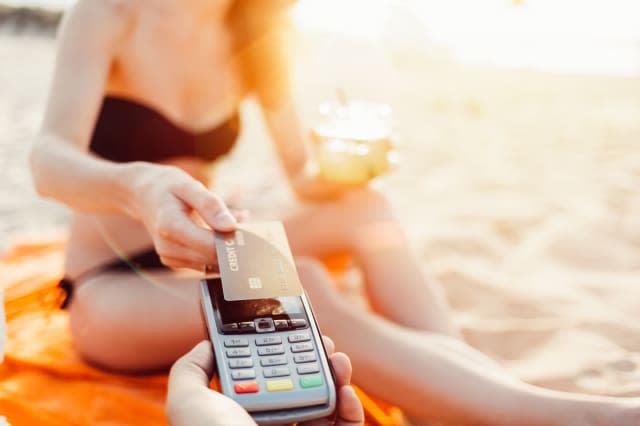What's changed in 10 years of contactless payments?

Happy birthday to contactless cards, which were introduced in the UK a decade ago.
Since then, we've spent more than £60 million using contactless technology - with Barclaycard figures showing that more than half of all transactions worth under £30 are now made this way.
See also: Is cash on the way out?
See also: Contactless 'tap and go' card payments soar across Europe
Barclaycard's Tami Hargreaves said: "Our data shows that the uptake and usage of contactless payment technology continues to grow, with paying by 'touch and go' now the preferred way to pay for many Brits."
Not everyone is convinced of the benefits of contactless payments, though, mainly due to worries about criminals using them to steal cardholders' money.
Do contactless payments put you at greater risk of fraud?
When contactless cards were introduced in 2007, many people feared they would lead to an increase in fraud.
But while contactless card fraud has spiralled over recent years, this is mainly due to the massive increase in contactless payments.
Although contactless shot up by 150% in 2016, with almost £7m lost, figures from Financial Fraud Action UK show that the losses equated to just 2.7p for every £1 spent in 2016, down from 3.6p in every £1 spent in 2015.
This suggests that contactless payments are no more risky than those made with CHIP and PIN cards.
There is still a danger when contactless cards fall into the wrong hands, however, which is why the head of the City of London police has this week spoken out against increasing the contactless payment limit from its current level of £30.
"I would advise against increasing it for the moment because the losses could be quite significant," Commissioner Ian Dyson said.
"At some point the technology will change and you can raise the limit. The cap is there for sound reasons."
What will happen to contactless payments in the next 10 years?
It is widely expected that the types of places you can use contactless payments will continue to increase.
Richard Koch at trade association UK Finance said: "With a generation of customers now used to the convenience of paying with contactless we are confident that the places you can use it will continue to grow, with usage predicted to increase four-fold in the next 10 years."
But contactless cards may well become obsolete in years to come, with companies testing everything from retina checks to chips attached to your fingernail.
"We're looking forward to continuing to innovate by introducing a number of new initiatives over the next 10 years," Hargreaves said.
Even now, contactless payments can be made in a number of ways.
Just last week, for example, the first car keys to have a contactless Barclaycard chip embedded in them were launched by DS Automobiles, part of Peugeot-Citroën.
And from next month, exercise tracker Fitbit will begin selling a new version of the wristband that comes with a contactless payment chip. A number of smartwatches also have contactless payment capabilities.
So from holding out your car keys, to simply waving your hand at the card machine, you can look forward to being able to pay for your groceries in any number of "touch and go" ways in 10 years' time.




